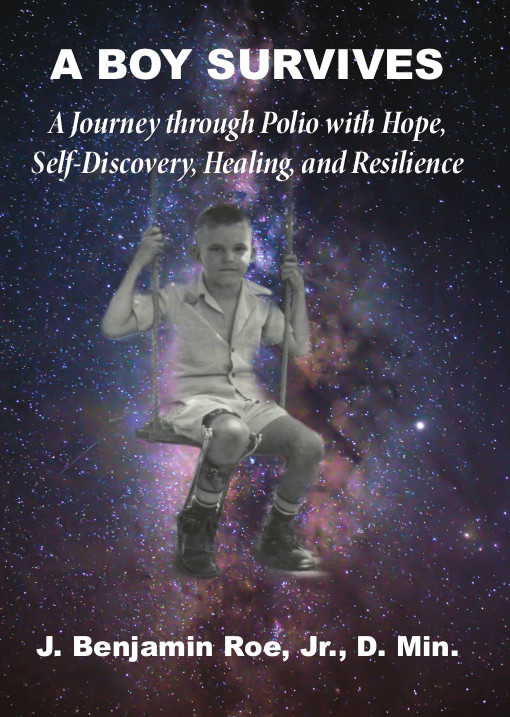A Boy Survives:
A Journey Through Polio
With Hope, Self-Discovery, Healing and Resilience
 Synopsis: Ben Roe had polio as a two-and-a-half-year-old child in 1948 in Arkansas, son of a Methodist minister, first of four children and the only boy. His stay in hospitals in Little Rock shaped his life, and left him with two puzzles to work out: sexuality and the roots of a pervasive loneliness. In this autobiographical memoir he lays out the chronology of his life and then uses poetry and stories to explore the psychological and emotional process in later life of attempts to remember and understand the life-long impact and consequences of those hospital stays. Issues of attachment and sexuality are prominent, as well as how these influenced his careers, successes, failures, hopes, growth and healing. A final section summarizes conclusions and learnings. An extensive annotated bibliography and five additional brief articles on sexuality, faith, disability, and a eulogy for his sister Phyllis conclude the book.
Synopsis: Ben Roe had polio as a two-and-a-half-year-old child in 1948 in Arkansas, son of a Methodist minister, first of four children and the only boy. His stay in hospitals in Little Rock shaped his life, and left him with two puzzles to work out: sexuality and the roots of a pervasive loneliness. In this autobiographical memoir he lays out the chronology of his life and then uses poetry and stories to explore the psychological and emotional process in later life of attempts to remember and understand the life-long impact and consequences of those hospital stays. Issues of attachment and sexuality are prominent, as well as how these influenced his careers, successes, failures, hopes, growth and healing. A final section summarizes conclusions and learnings. An extensive annotated bibliography and five additional brief articles on sexuality, faith, disability, and a eulogy for his sister Phyllis conclude the book.
Why I wrote it: I've written this story of my life mostly for myself, to make sense of my journey, and to develop a "coherent narrative" of my life and experience, as Daniel Siegel urges in his book Mindsight, defining "coherent narratives" as "the way we make sense of our lives and free ourselves from the prisons of the past." (Siegel, 2010, 70) This is so important, he repeats later: "Making sense is a source of strength and resilience...I've also come to believe that making sense is essential to our well-being and happiness." (173)
I have also written it for anyone who is curious about how I came to be the person you may know and may have met.
Finally, I have written this for anyone who cares about what happens to young children and the burdens they carry from trauma and other "adverse childhood experiences." My story is about me as a young child who set about trying to “figure things out” mostly on my own and the discoveries and decisions I made over the next seven decades. The experience of polio at 29 months was a disaster for me as this child; and, because of hospital rules in 1948 and an early sexual experience, I was set up to solve two puzzles: sexuality, and the origin of pervasive sadness and loneliness. These are explored in some depth in Part II, after the basic chronology and stories of my life. At the end is a section of Concluding Thoughts where I summarize the outcomes of my Journey of Hope and Healing. The psychological concept of “attachment” is critical in understanding what happened to me. Facing the consequences of the “insecure attachment” that happens under these circumstances is what has helped me write this story. Readers who have been traumatized by abandonment and/or sexual abuse as a child should know that these issues are discussed frankly in Part II.
Throughout, I mention various books and authors whose writings have been influential and helpful in my journey of life and understanding it. I have provided an annotated bibliography at the end, which further documents the sources of these helpful concepts and ideas.
Available here: Memoir Page and as a printed paperback through Amazon and Barnes and Noble.
